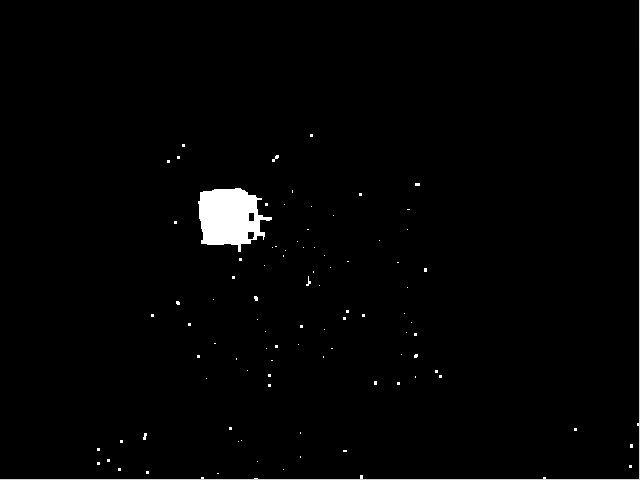DISCLAIMER: I can NOT use morphological (i.e. erosions) operations or drawContours to solve this problem.
I'm trying to find an efficient solution to eliminate most small blobs in this image, leaving the big blobs absolutely intact.

The first thing that comes to my mind is to create a custom 7x7 or 9x9 filter that identifies small isolated blobs, but I never had the need to use such kind of specific technique, so I don't know how I would build and apply such a filter. Any ideas will be welcomed.
DISCLAIMER: I can NOT use morphological (i.e. erosions) operations or drawContours to solve this problem.


